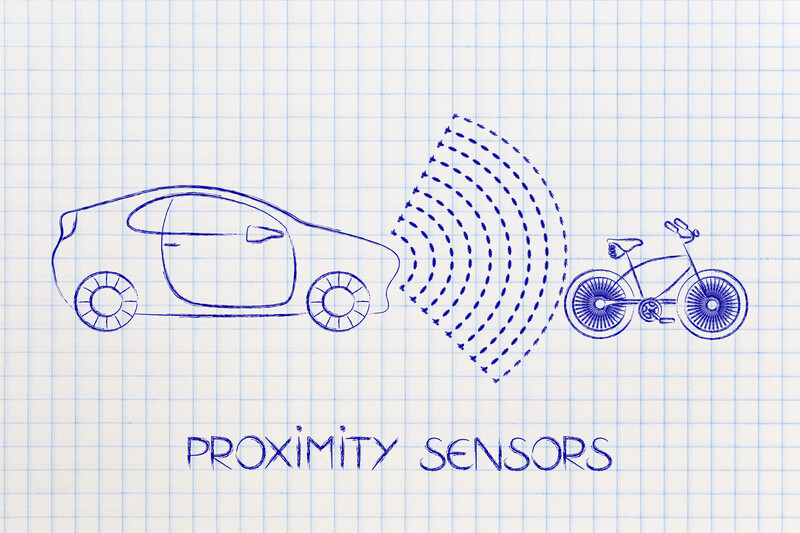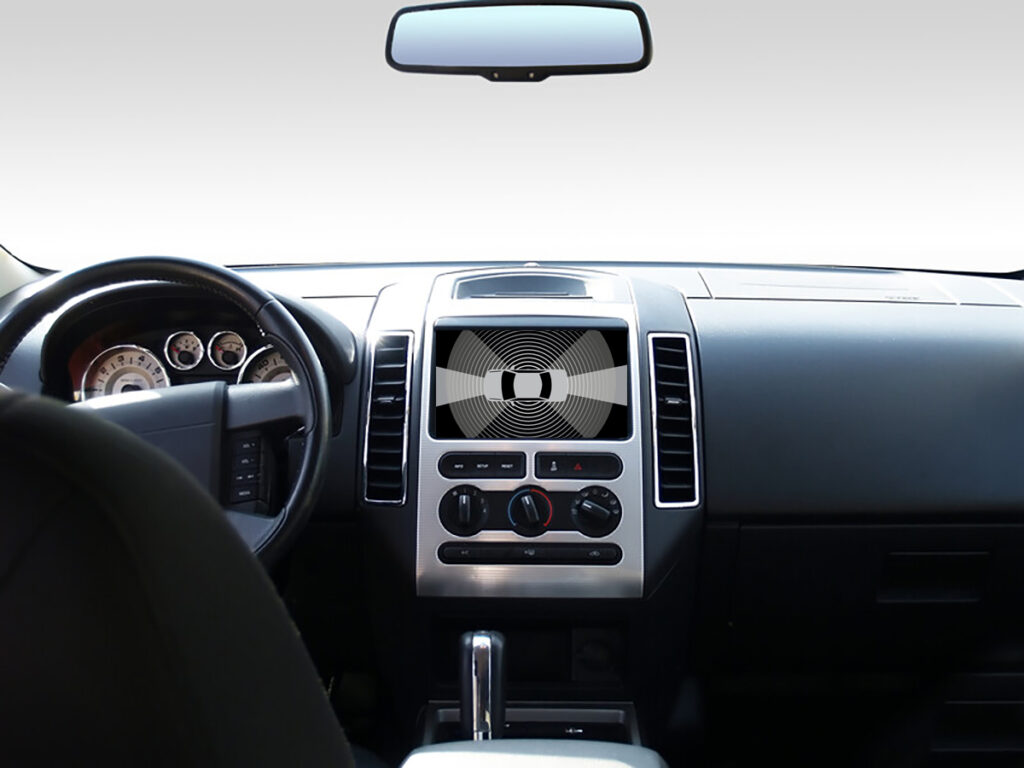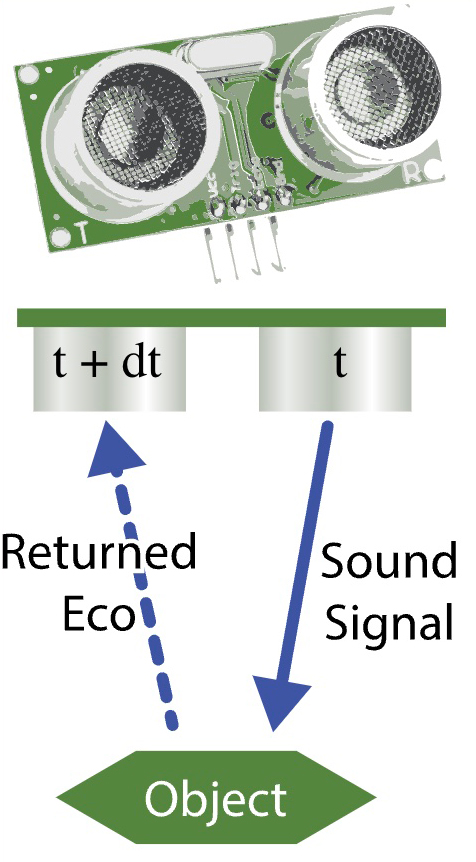
Proximity Sensors in cars - automobile

What is a proximity sensor on a car
A proximity sensor for cars is a tool for identifying nearby items. These sensors operate using an electric signal and can sense an object without making physical contact.
Car sensors warn if someone tries to break into or tamper with a vehicle, commonly used in security systems. Smart keys can unlock doors and help with parking by finding open spots when the owner is nearby. We utilize these sensors at times to estimate distance and prevent harm to the vehicle, person, or animal.
Table of Contents
Define proximity
Proximity in Technology: Proximity refers to the physical closeness of objects or things. A concept often utilized in technology through proximity sensors. Engineers designed these sensors to detect the presence of nearby objects, people, or body parts.
Companies commonly use proximity technology in security, keyless entry, and automated parking systems. It activates actions when something or someone approaches a specific area or entrance.
- Proximity sensors can sense cars coming and open garage doors automatically. These sensors can also count how many cars enter a garage.
- They can also detect people or animals approaching your car and trigger an alarm.
- Unlock your car doors when you are nearby automatically with Proximity sensors.
- Proximity sensors help cars park by detecting space or when they get close to a wall or another vehicle. Automatic car parking works by detecting and computing distances from the car to the obstruction.
- Car security systems use sensors to detect if someone is trying to break into or tamper with the car.
- Proximity Sensors can even be used for electronic hand controls for cars.
Proximity Meaning
The word proximity derives from the Latin proximitas, which means “closeness.” Proximity refers to the physical closeness of two or more things. Proximity sensors detect the presence of nearby objects in security systems, keyless entry systems, and automated parking systems. Proximity means things near a door, hatch, or a person’s body.

How do car proximity sensor work?
Automobile proximity sensors detect the presence of nearby objects without making physical contact with them. These sensors use electromagnetic fields, sound waves, or light to detect the object’s existence.
Proximity sensor range
The proximity sensor range is the distance that the sensor can detect an object. The range of a proximity sensor depends on several factors.
Factors being:
• the type of sensor
• the size of the object it detects
• The sensor’s usage environment influences its performance.
What are proximity sensors used for?
Proximity sensors detect nearby objects without making physical contact with them. These sensors detect and present information to occupants about items in and around the car.
Prevent car injuries with proximity sensors
Smart Close® is a device designed to prevent injuries by detecting electric field changes and quickly reversing the powered closure element. It excels in angle/scissor action and meets FMVSS118 S5 requirements for autonomous vehicles or remote activation needs
The Smart Close® also interfaces with all power closure systems, power windows, sunroofs, and power liftgates. The Smart Close® system can detect people and automatically stop. If the car window switch is held down it will still stop the window from pinching. Helping keep everyone safe and may also have benefits for NCAP.
Regarding safety, nothing is more important than ensuring that power closure systems are correctly functioning. Ascencioné created a special solution that uses electric field sensing to find obstacles and reverse the power closure element.
This new technology has several benefits. It features faster closing speeds, detects and reverses without force, and is compatible with all power closure systems. The Safe Close™ system improves the safety of power closure systems. Providing injury-free, no-trap protection for all users.
Proximity sensors for cars prevent damage to your automobile.
Along with protecting people from injury, proximity Sensors will also protect against damage to your vehicle. Your car door will remain closed if obstructed by any object. In the age of auto opening and closing doors, proximity sensors are a blessing.

Actual operation of Brite eyes Keyless unlocking system for a car door.

Inductive proximity sensors
Inductive proximity sensors operate using an electromagnetic field to detect nearby metal objects. This field is generated by coils of wire called inductors, which have inductance. The coil creates a magnetic field in the sensor’s front area.
The LC Oscillator creates a radio frequency to generate an electromagnetic field. The trigger circuit detects changes in oscillation amplitude and informs the output circuit, which activates to deliver a signal.
Capacitive proximity sensor
Capacitive proximity sensors use an electric field to detect the presence of nearby objects. Most sensors have two parallel plates separated with a dielectric material such as plastic, glass, or porcelain. These materials do not conduct electricity well. However, the plates are conductive and made of Aluminum Tantalum or other metal materials.
When connected to a battery, one plate becomes negatively charged, and the other becomes positively charged. Capacitance refers to the ability to store electric charge under applied voltage, while the dielectric constant measures a material’s strength in storing charge. The distance between the both plates and the material determines the capacitance of a capacitor.
Two types of capacitive sensors
First, the dielectric type can detect an object with a dielectric constant greater than air. Dielectric types of capacitive proximity sensors will sense both metallic and non-metallic objects.
In conductive sensors, one plate is inside the sensor, and air serves as the medium between it and the object. The object acts as the other plate. As they get closer, the sensor detects it, generating a signal. The target material is conductive.
Cunductive sensors commonly found in keyless entry systems. Automatically unlock the doors when the owner is nearby. Capacitive proximity sensors can also enhance car security, detecting attempts to break into or tamper with the vehicle.
Radar capacitive proximity sensor
The capacitive radar sensor has a long detection range. Unlike typical proximity sensors, limited to shorter distances these are different. Capacitive radar sensors can detect objects several feet away.

Ultrasonic proximity sensor
An ultrasonic proximity sensor uses two transducers to send and receive ultrasonic pulses. These pulses bounce off objects to gauge their proximity. This relays information about the object’s distance. Ultrasonic sensors determine if there is anything in front of the sensor and how far away it is.
Micro proximity sensor
A micro proximity sensor is a type of proximity sensor that has a concise range. The microsensor detects objects too close to the car that may cause a collision. The range of a micro proximity sensor is typically just a few inches.
Laser proximity sensor
Laser sensors emit a laser beam and detect object presence through beam reflection. Placed on all four car corners to measure obstacle distance.
The laser sensor is ideal for small to medium-sized objects. The laser proximity sensor can reach a distance of up to 10 feet.


Proximity Sensors for cars in development for 2025
We currently work with two OEMs on radar proximity sensors in-car products. Both use Smart Open® in conjunction with proximity testing and calculations to make the motors function. We will be announcing these products next year, hopefully along with your ideas for this fantastic technology!
Field Capacitive
Many newer vehicles feature the Smart Close® system, which detects obstacles without contact, preventing accidents. Sensors detect changes in the electric field around the vehicle. Prompting instant reversal of closure elements to avoid trapping or injuring anyone.
Unlike traditional systems, Smart Close® is faster, more accurate, and ensures smoother, safer operation. All power closure systems should incorporate Smart Close®.
Prevent injuries
Safe Close® is a device that detects changes in the electric field. Quickly reverses closure elements to prevent injuries. It excels in angle/scissor action and meets FMVSS118 S5 requirements for autonomous vehicles or remote activation needs.
It interfaces with all power closure systems, including windows, sunroofs, and liftgates. By sensing human presence and reversing closure elements. Safe Close® eliminates pinch when holding the switch closed. Ascencioné has created a special solution that uses electric field sensing to detect obstacles and reverse power closure elements.
This technology offers several benefits:
- faster closure speeds
- effortless detection and reversal
- works with all power closure systems
The Smart Close® system enhances safety by providing injury-free protection from trapping. A car’s obstacle sensor achieves this.20
Ascencioné’s innovative solution utilizes electric field sensing to detect obstacles and reverse power closure elements. This innovative technology offers faster closure speeds, effortless detection and reversal, and compatibility with all power closure systems. The Smart Close® system enhances safety by providing injury-free protection. Protection from trapping, all achieved with a car obstacle sensor.
Proximity sensors are revolutionizing automotive technology by enhancing safety, convenience, and security. From detecting obstacles and preventing collisions to enabling touchless keyless entry systems, these sensors have become a critical component in modern vehicles. By leveraging various technologies like capacitive, inductive, ultrasonic, and radar sensors, automakers can optimize car features such as automated parking, power closures, and anti-pinch systems like Ascencioné’s Smart Close®. As vehicles become increasingly autonomous, proximity sensors will play a vital role in ensuring safer interactions with the environment, minimizing risks to both passengers and pedestrians. Looking ahead, advancements in sensor technology promise to further integrate intelligent detection systems, making future cars smarter and more responsive than ever before.


